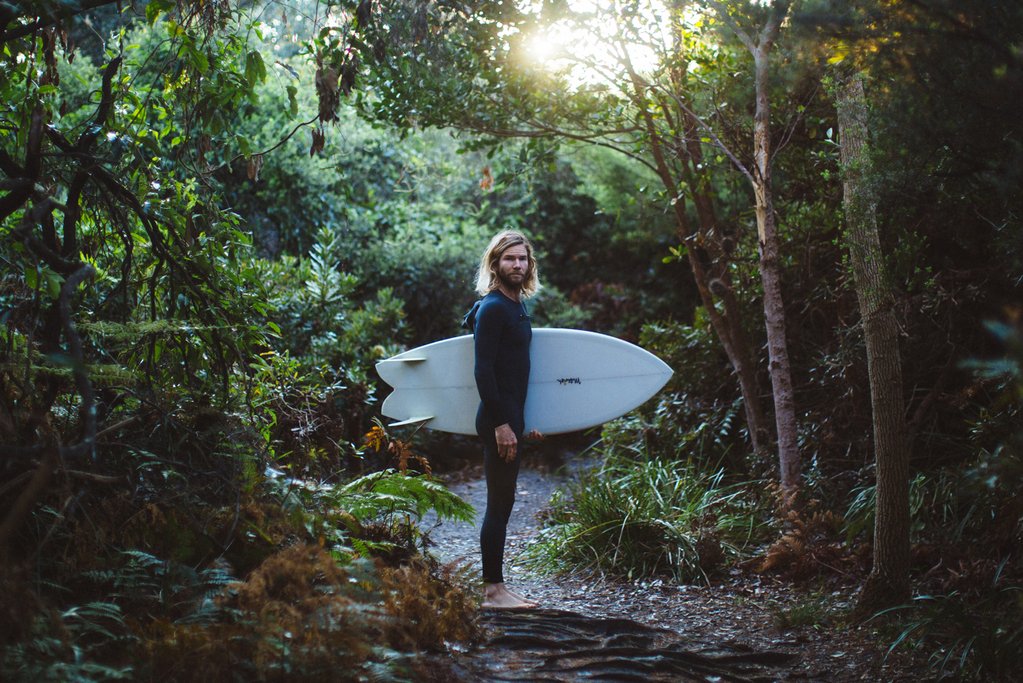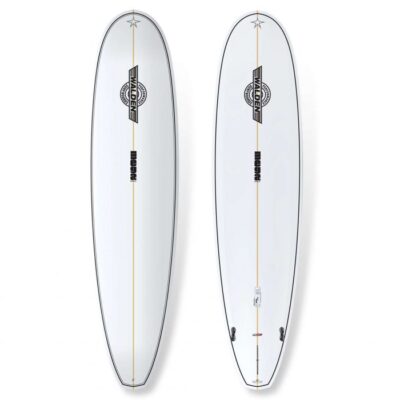Description
No doubt the Fish has always been the flagship of the alternate surfboard scene. There have been pockets of guys riding them since it’s birth in the late 60’s / early 70’s, cliff guys, guys like Steve Lis.
By the 90’s surfers were polarised, riding extreme rocker, low volume boards. I was into it, those boards were addictive because of the small flash of brilliance you would get in a super tight pocket, and I have used ingredients from the 90’s in most of my boards these days. However, they were hard to ride and made surfing very serious and all about practicing maneuvers, less about riding waves. I quickly became jaded with the hard work required to ride those boards. The 1996 Andrew Kidman film Litmus opened my eyes and planted seeds of getting back to riding the wave again not just riding the board, then Tom Curren kills it on 5’5” fish and it’s a huge influence on me, I started chopping noses off my boards, blowing out tail widths, adding deep swallows. They were mostly still thrusters, but a lot more fun was coming back into my surfing. Other Litmus inspired guys were digging into history and discovering Steve Lis, Skip Frye etc, and some timber keeled fish started appearing, and before long the fish almost became a mainstream surfboard.
Personally I always struggled with the single dimension of the keels, you would set a line and it would track beautifully but it was really hard to break the line unless you were riding super slopey soft waves, so I mucked around with cut-away keels and quads with good success but it’s so hard to go past the speed of a Twinny in neutral trim.
Years passed, and loads of different shapes come n go in my board rack but there is always a fish in rotation, which is funny being that my first stand up board was a hand me down knee board Twinny.
Now in 2016 I felt the fish needed new life breathed into it, so with some beautiful templates that I inherited from Steve Lis (through Dain Thomas) 10 + years ago, we threw some lines around on blanks and on fin panel. On blanks we ended up pulling the pod split in a few inches, with a slightly shallower swallow. The mid section is the same width, but the tail is pulled in using a snowboard inspired side cut, no hip point, but tons of straight in the back third. The nose is also pulled in (once again compared to a Cali fish) eliminating the ears up front which can get into trouble in hollow sections and on your back side. Bottom-shape is a subtle front foot single concave to a flat vee tail which lets it drop on rail nicely. The rails are a forgiving 70/30 up front blended to thinned out tips in the swallow.
On the fin panel, after some hit n miss options we ended up with a single foiled fin that sits between a keel and a 70’s MR fin, and positioned them further up the board. The results are a really versatile surfboard that although it has deep Californian roots is uniquely Australian in that it handles our hollow waves and short peaks, and thanks to the fin set-up and narrower tail, it surfs really well backhand, which has always been a challenge on a fish.
After we spent so much time on the shape and fins, we wanted to curate the colour-ways as well. Searching for colour inspiration I came across a picture of a set of vintage chairs painted in rust red, powder blue, stone grey, and bus green all in opaque satin finish, with pale birch timber legs. These colours transferred beautifully to the boards thanks to Bills resin skills, and the semi-opaque cut laps contrast perfectly with the birch cream fins.
Vinnie the Twinny. A daily rider with a rich tapestry of modern history.
Ben McTavish





